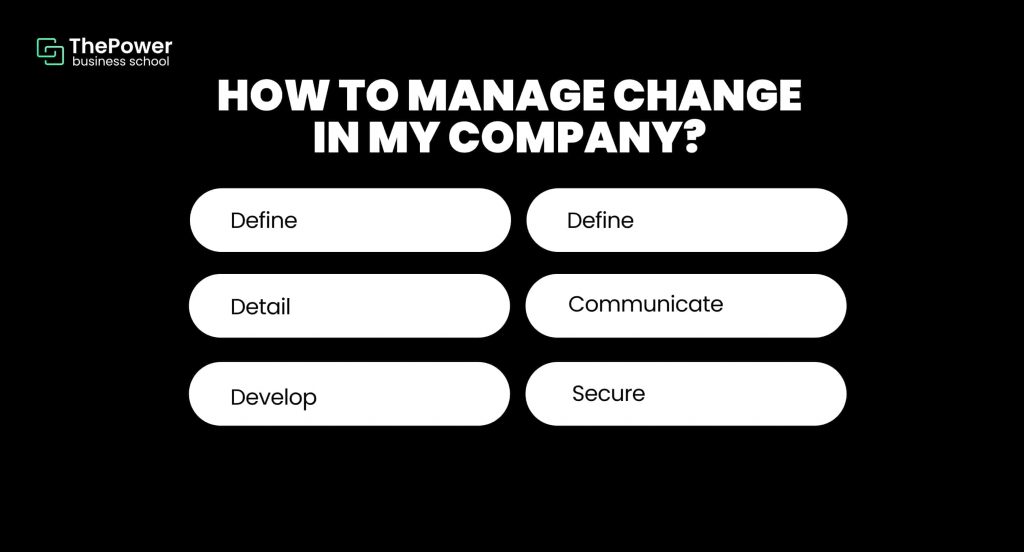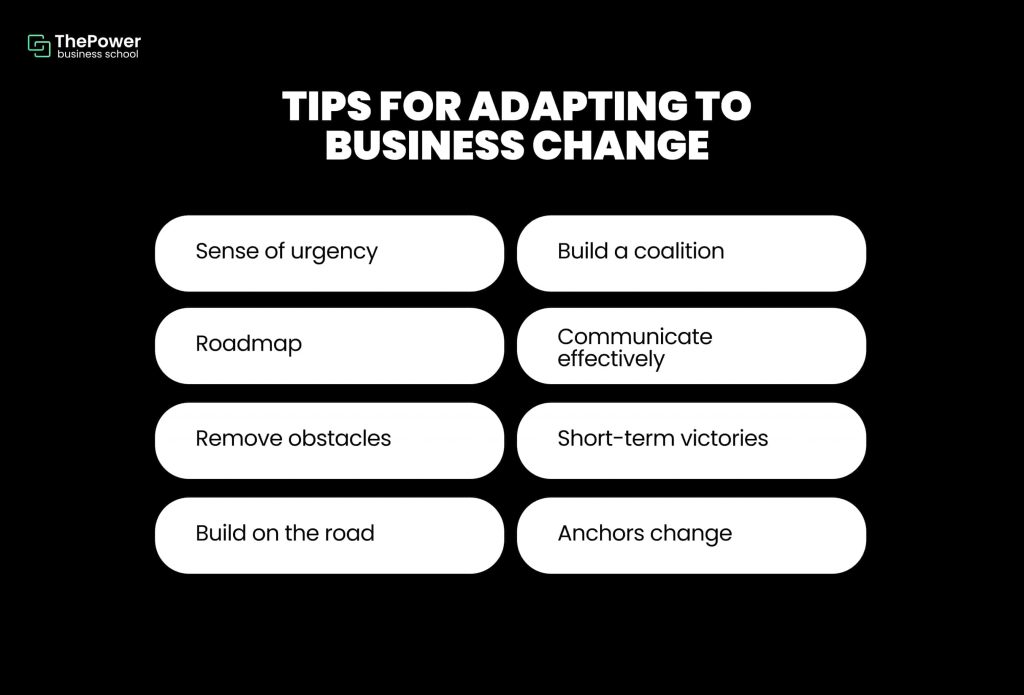
Claudia Roca
Have you ever had to implement a change in your team? No matter what it is, if you have implemented changes, you’ll know how complicated it can be, because people often close themselves off to new realities.
However, you no longer have to worry, and today we’ll talk about how you can manage organizational change so that you can execute it like an expert.
Today's market does not forgive anything, so you have to pay attention to the new scenarios that the niche offers in order to get there before your competitors. It's adapt or die and there’s no turning back.
Shall we start now?
What is organizational change management?
Organizational change management is a methodology that aims to facilitate the implementation of new transformation processes within the company to go in a different direction and achieve better results.
This implies in most cases working with people and helping them understand that this new work method will bring better benefits than the previous one.
In our 21st century, digital transformation has forced all companies to constantly get down to work. To create a successful business model is no longer enough, you have to be attentive to new trends in order to modify the necessary processes.
Renew or perish is the new motto and today you will learn how to execute this without so much resistance.
Importance of managing organizational change
Having the approval of the human capital of your company is essential to make the organizational change you desire, so it’s necessary to take the time to convince each member of this transformation.
It’s necessary to understand that it’s natural for people to be reluctant to accept possible changes. This activates the primary brain that seeks to keep us alive in any circumstance and change in most cases causes uncertainty and fear because it’s a 100% unknown path.
In this sense, knowing how to adapt to new circumstances is a key indicator of business leadership, since the managers of organizations have to be prepared to be agents of change.
Therefore, if we want to have a promising future, it’s essential to be open to new opportunities no matter how much fear this can cause. The results will prove us right in the end.
How to manage change in my company?
There are several steps we must follow to manage change in an organization. The worst thing we can do is introduce it immediately, because by human nature, people are not ready to change their work routine from one moment to the next.
Let's now take a look at some of the steps you need to follow in order to succeed in this process. Take note and do not miss them:
1. Define
Yes, the first thing to do is to define what we want to change and explain the reasons that led us to this decision.
This work plan must be in writing and shown to each of the department leaders so that they can pass it on to the other members of the organization.
2. Detail
After defining the project, it’s time to translate the vision of change into a reality, so that it becomes a vision for the future.
We can say that this is one of the most time-consuming phases, since it’s necessary to explain to everyone equally what the details of this change are going to be, what we want to achieve and the steps to follow to reach a safe harbor.
The better structured the work plan is, the fewer negative voices we will encounter in the process.
3. Communicate
Closely related to the previous point. In this step we will spend as much time as necessary talking to each leader and member in general to explain what the background of the whole program is.
One of the reasons why people are closed to new changes is because they think there’s no real reason to execute this change. Therefore, if you explain it in detail, you will have gained a lot of ground.
4. Develop
The key point has arrived, the time to get down to work. Here you will turn the organization into its new state and for that you will have to deliver the tools your team needs to adopt the change in the shortest possible time.
5. Secure
Finally we have to make sure that the results you projected materialize in the time you planned.
They may not be as you predicted, but the important thing is that improvements are seen in the organization, since at the end of the day this is what we are looking for when we make a change.

Tips for adapting to business change
It all started with Charles Darwin's famous theory of evolution. Change is inevitable, especially in the business world, so the best thing to do is to be open-minded and develop leadership to sell that new landscape to our entire team.
Let's take a look at some tips that can help you manage organizational change:
1. Sense of urgency.
The first thing you can do to manage a major change in your business is to give it a sense of urgency, that is, to show that this change is essential to achieve the results you have been expecting for a long time.
Then, the way you sell your speech is key. You can suggest that with this scenario the company will take advantage of a new trend that has reached the market and if it doesn’t apply the change, it will be shortly left behind.
The sense of urgency is what makes people give priority to many points. Execute it and let us know how it goes.
2. Build a coalition
Coalitions are more powerful than many people think. For this you have to identify those leaders who are aligned with your business vision to form a team of sorts.
They will help you sell your pitch and get new members to embrace the change you propose.
3. Roadmap
One of the reasons why change generates so much resistance is because many managers don't provide a roadmap showing the steps you need to take to get from point A to desired point B.
This causes uncertainty, as people don't really know what they will encounter once they start working. Therefore, it’s essential that you show them the path to follow to achieve the goals they have set.
You will be the lighthouse that every ship needs to reach a safe harbor.
4. Communicate effectively
Honesty is a key part of team communication. In this way, it’s important that you answer each of the doubts that the organization has without telling any lies.
Be sincere and mention the reasons that led you to make that decision and the details of the new work plan. This will open the minds of the other members and everything will go more smoothly.
5. Remove the obstacles
Once people are convinced, it’s time to start working and overcoming each of the obstacles they will encounter along the way.
It’s essential that as a leader you are at the forefront and guide all the teams on what to do in each case. This is the only way to give them the confidence they need to move forward.
6. Short-term victories
How can you keep your organization motivated when they decide to go down a new path? The best way is through short-term goals, as it will allow you to get those victories that will improve the mood of the entire organization.
Make a projection of the goals you want to achieve in several years and the ones you want to achieve in the next few months to celebrate each victory.
7. Build on the road
It’s true that you’ll have a roadmap that works like a GPS that will mark the path you need to follow to reach the goal. However, this doesn’t mean that it cannot be reviewed over time to make some suggestions.
This way you will determine that you are on the right path, which will save time and frustration.
8. Anchor the change
The last thing you need to do is embrace change and establish it as a culture within the organization.

Reasons for implementing organizational change
There are many reasons why we need to implement changes in an organization, although everything will depend on the context of the situation.
Let's see:
1. To obtain better results
Of course, changes always have to be for the better, and in the case of organizational modifications, we implement them in order to obtain better results in a specific area.
This can cover many aspects, from increasing sales, reducing costs, bringing a new product to the market, expanding to other countries to opening a new branch.
Set the objectives well and start selling your pitch to the other team members.
2. Cut costs
Lowering costs is one of the objectives that all companies have in mind. The idea is to produce more without increasing expenses in order to obtain greater profitability in a relatively short time.
To achieve this, it’s very likely that we will have to change something related to our business plan and that’s where you have to focus on the economic improvements that the entire organization will receive.
3. Improve the employee experience
Users are important, but even more relevant are the employees who make the whole process of creating the product to solve the needs of those customers.
Therefore, it is essential to assess how their quality of life is, how they feel and what we can do to facilitate their daily work. This is as easy as talking to each one of them or doing a survey so they can give us their feedback.
This way you will improve their working conditions and they will provide a better service to the corporation.
4. Take care of the final customer experience
If you realize that customers are not happy with the product delivery process, it's time to make internal changes and that's where you have to make all the effort to sell the pitch.
Do this and you will see how the results start to improve.
5. To be competitive
Of course, we cannot forget the fact that with good organizational change management we will be much more competitive.
There are more and more companies offering their products to the market, so it’s necessary to look for alternatives to stay relevant in an economy where there are more and more participants.
Detecting it in time and making a good management will help you to modify the problems you may have.
Final recommendations
The truth is that change is a variant that is always present in all companies and you as a leader have to be aware of the possible signs to start applying it before it’s too late.
As you may have noticed, the market currently has no patience. If you blink it’s very likely that another company has already taken a piece of the pie and problems will start to arrive.
Hopefully today you have understood why you should embrace change and the steps you need to take to implement it successfully. Now it's your turn to show us what you've learned.
What changes do you want to implement in your organization? Subscribe to the blog and don't miss our latest updates.
Oct 14, 2022








